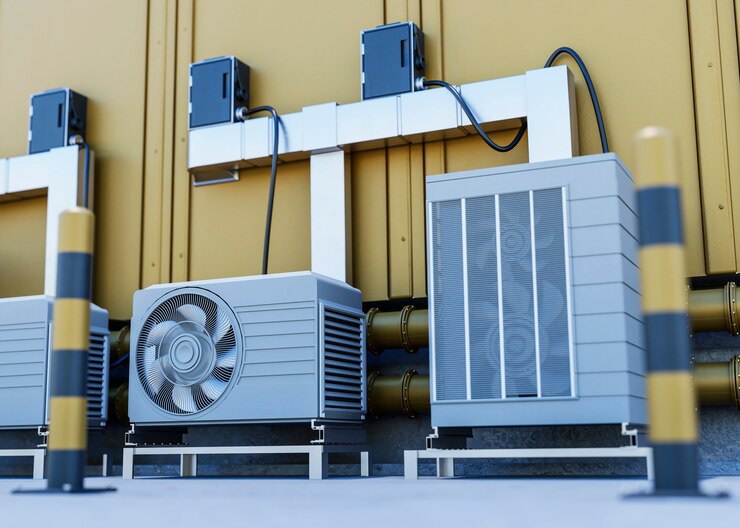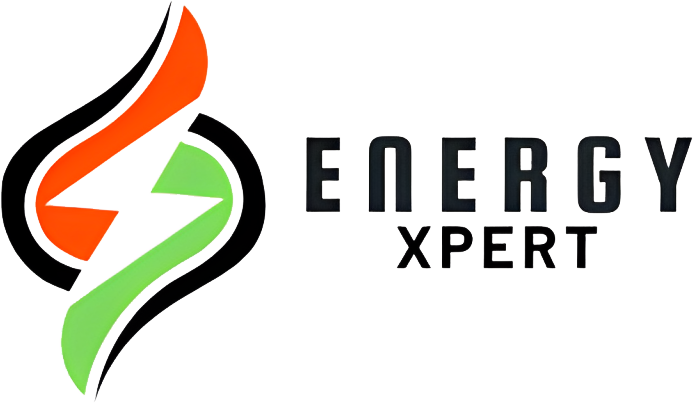Without considering HVAC, it is impossible to talk about or make any progress toward building energy efficiency. While control, refrigeration, compressed air systems, and lighting have all advanced significantly, not all buildings have the most efficient HVAC systems. Furthermore, comfort is a major factor in capital upgrades, and I find that the majority of sustainability-led decisions include an additional investment purpose.

We recently turned on three of the six systems for our first large-scale heat pump system installation for a school and community building in Oak Park, Illinois, which makes this message extremely topical. Heat pumps move heat from the outside to the inside in the winter and from the inside to the outside in the summer using electricity. Modern systems function efficiently even at temperatures below freezing, and they cool almost effortlessly throughout the summer.
The technology we are implementing is sophisticated, quiet, and gives this building access to comfort controls that it hasn’t had for the previous 70 years.
Our first buildings were heated by wood many years ago, then by coal, and finally by natural gas. The majority of commercial and municipal buildings in use today have packaged rooftop systems, which combine heating and cooling into a single rooftop system. If you’re wondering why heat pumps and building electrification are making such a big deal, consider this: contemporary heat pump systems are 50% more efficient than conventional rooftop systems.
The majority of building types consume a huge amount of energy for heating and cooling, therefore if we want to significantly reduce the environmental effect of our built environment, we will need to make some significant modifications.
Here are two ways we can upgrade the HVAC systems in our buildings: either we replace the outdated equipment with more sophisticated rooftop equipment, or we make tiny technological upgrades like installing smart thermostats.
In contrast, and this is where I think my argument becomes more significant, we can make radical changes to our systems. Buildings could be electrified, energy recovery ventilators could be used, and a complete overhaul of current systems could be achieved with Variable Refrigerant Flow (VRF) heat pump systems. We currently deal with several of our forward-thinking clients in this way.
Similar to a refrigerator or air conditioner, a heat pump transfers heat from one area to another using electricity. These systems are able to extract heat from the outside air to warm an area, even on extremely cold days. Even at lower temperatures, modern systems can heat an area effectively to -10 degrees Fahrenheit, though their effectiveness decreases somewhat below that point. In Chicagoland, heat pumps provide both heating and cooling for thousands of buildings. Contrary to popular belief, these cutting-edge systems function well in our chilly climate.
Heat pumps can be ground sourced, which is geothermal heating and cooling, or air sourced, which is what we will be concentrating on today. Air-sourced is more feasible for the majority of structures in our area, even though geothermal energy is fascinating and worth investigating.
Multiple indoor units transmit heat from one room to another for advanced energy savings in a Variable Refrigerant Flow (VRF) system, which is a heat pump system that can simultaneously heat and cool a building (imagine one hot, sunny room with a frigid room on the other side of the structure). Energy from the outside air is silently captured by a big outside unit and sent inside via copper refrigeration pipes.
Due to the lack of massive ducts to distribute warm or cold air throughout the areas, I frequently compare these systems to commercial refrigeration systems rather than standard HVAC systems. Rather, discrete temperature control is provided to every room via insulated refrigeration lines that are installed between them. It entails adopting a fresh perspective on a structure and a dedication to making the area better.
Recovering Energy Currently, one of the most innovative developments in HVAC are ventilators. First of all, in terms of COVID and our health, we are all aware of the importance of outside air to buildings nowadays. Less chance of germs transmitting from one person to another exists in fresh air.
Fresh air on extremely hot or cold days, however, also translates into greater energy costs. Adding outside air makes your system work more to warm or cool the entering air after it has worked hard to condition the space. According to local code, places must be ventilated; nevertheless, some older spaces may not have this feature, and even fewer may have functional systems. I have frequently witnessed exterior air dampers covered with cardboard or left permanently closed to aid in system operation on extremely hot or cold days.
Naturally, there is some conflict between energy efficiency and bringing in outside air.
To recover the heat, ERVs stack the incoming air on top of the outgoing air. The temperature gradient is traversed by heat. Heat is transferred to incoming outside air throughout the winter. Additionally, heat from incoming air is released outdoors throughout the summer. The majority of these systems have only been 60–80% effective; however, new cellular technologies can manage moisture, keeping it in during the winter and out during the summer, with up to 93% efficiency. In Chicagoland, I would guess that less than 5% of buildings actually have enough outdoor air flow. With the help of this technology, interior air quality can be further enhanced while maintaining sustainability and a sufficient amount of outside air.
Since this technology is not new, the energy savings have been shown in pilot projects and other structures. In fact, a pilot study program in the Pacific Northwest showed that HVAC energy savings ranged from 49 to 89% between 2015 and 2018. It is possible to fully eliminate your building’s gas bill while maintaining the same amount for your electric bill. Imagine the same outcomes applied to thousands of Chicagoland’s business properties; the environmental impact would be significant.

In Illinois, commercial and municipal buildings can easily take advantage of rebates and incentives for energy-efficient HVAC systems, LED lighting, and smart building controls. Prescriptive rebates are the most common type, with a predetermined refund amount assigned to each item. Utility rebate systems must carry out additional research to fully comprehend the savings, though, as new technologies do not have as much data on which to base this. In order to provide the groundwork for future rebates and incentives, utility companies require data.
Through clever changes to lighting, HVAC systems, and other equipment, Energy Xperts has assisted small and large companies around Chicagoland in becoming more energy efficient. We have assisted numerous businesses, both public and private, such as restaurants, fire stations, nonprofit organizations, and more, in becoming more energy efficient while lowering their energy costs.
Energy Xperts has assisted hundreds of clients in increasing the efficiency of their HVAC systems during his nearly ten years of experience. Give us a call for a free examination, and we'll help you find energy-saving options and renovations. Once you have all the information at your disposal, we can assist you in finishing the task. You can feel secure knowing that every facet of the project is taken care of with Verde's end-to-end service, regardless of whether you choose to update entirely or make a few minor adjustments.
To get started, either call the Energy Xpert LED team or complete our online form.
We would be delighted to have the chance to visit with you and discuss our services, methods, and unique selling points.
Our team of installers will visit your location to recycle your old bulbs and install all of the new LEDs.
Never believe anything we say. View our efforts to upgrade Chicagoland's HVAC systems to higher efficiency models or even incorporate EV car charging in order to draw in more clients and staff members while also increasing energy efficiency.
